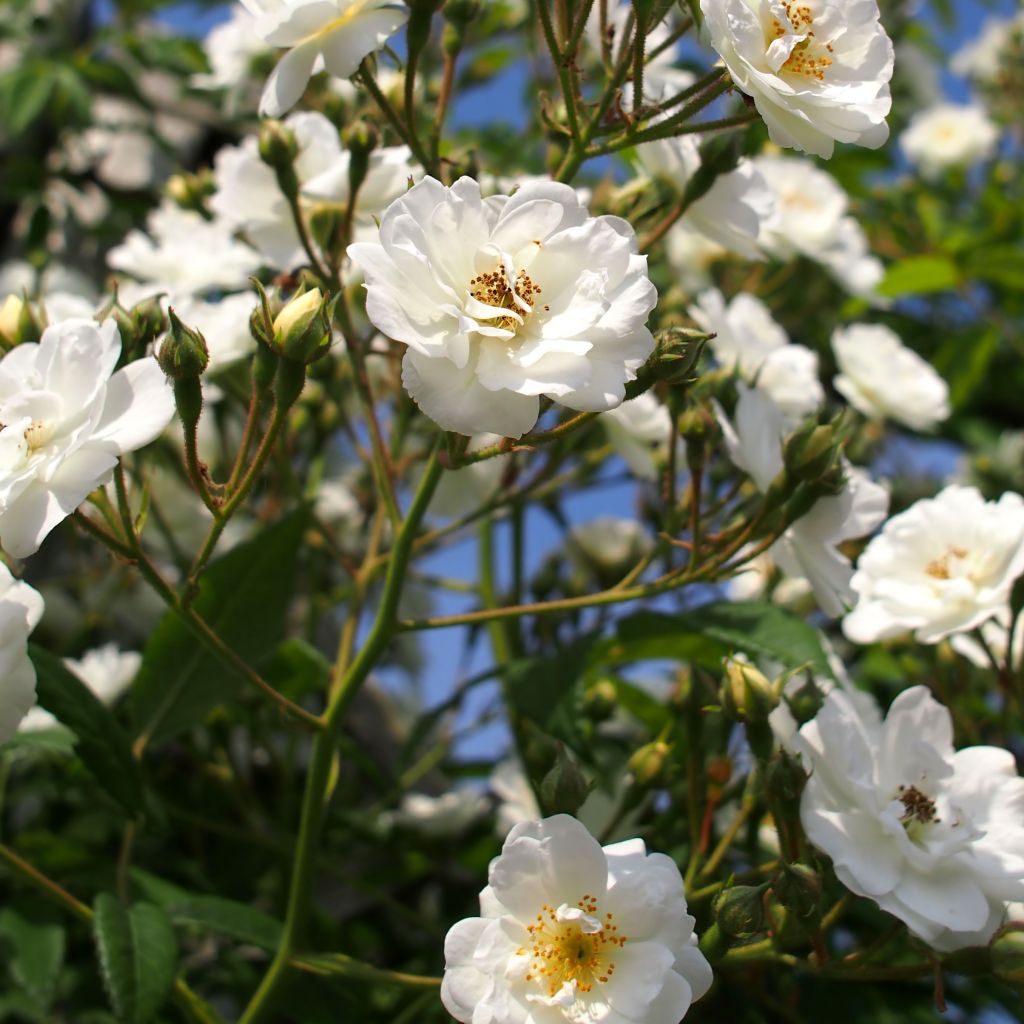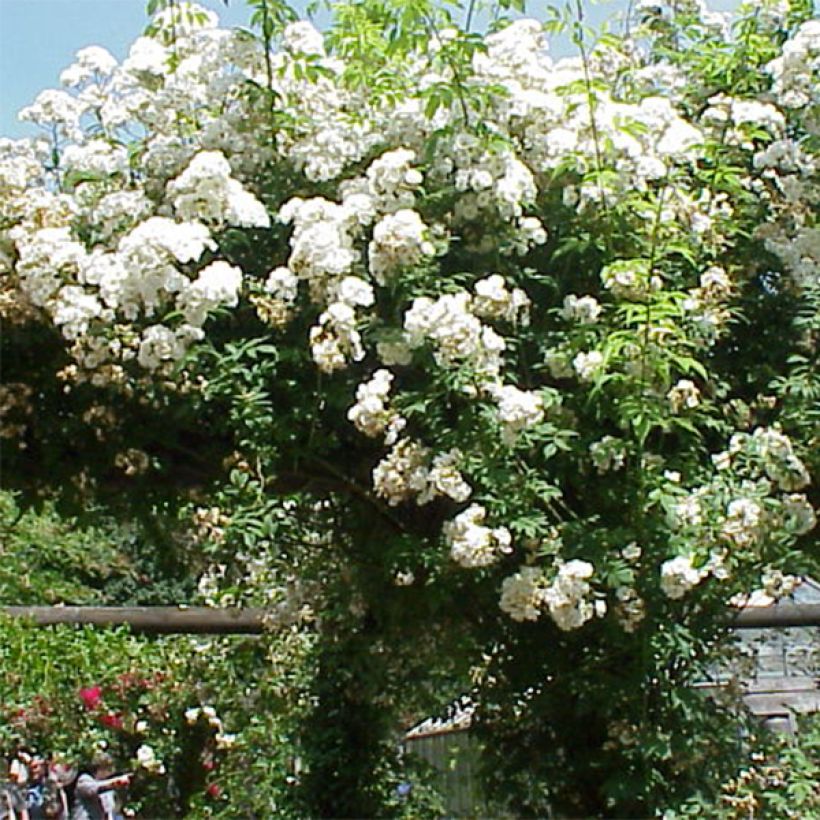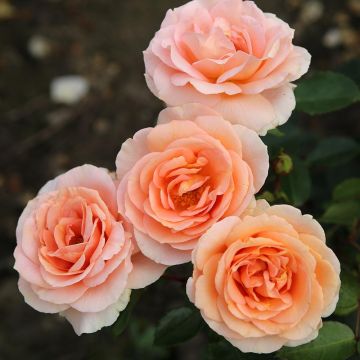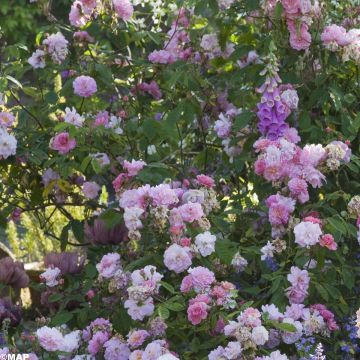

Rosa x multiflora 'Rambling Rector' - Rambling Rose


Rosa x multiflora 'Rambling Rector' - Rambling Rose


Rosa x multiflora 'Rambling Rector' - Rambling Rose
Rosa x multiflora 'Rambling Rector' - Rambling Rose
Rosa x multiflora Rambling Rector
Multiflora Rose, Japanese Rose, Baby Rose, Seven-sisters Rose, Many-flowered Rose
My plants arrived in perfect condition.
António , 23/12/2025
Special offer!
Receive a €20 voucher for any order over €90 (excluding delivery costs, credit notes, and plastic-free options)!
1- Add your favorite plants to your cart.
2- Once you have reached €90, confirm your order (you can even choose the delivery date!).
3- As soon as your order is shipped, you will receive an email containing your voucher code, valid for 3 months (90 days).
Your voucher is unique and can only be used once, for any order with a minimum value of €20, excluding delivery costs.
Can be combined with other current offers, non-divisible and non-refundable.
Home or relay delivery (depending on size and destination)
Schedule delivery date,
and select date in basket
We guarantee the quality of our plants for a full growing cycle, and will replace at our expense any plant that fails to recover under normal climatic and planting conditions.

Description
The 'Rambling Rector' Rose, also known as Rosa x multiflora, is a vigorous rambling rose and an excellent choice for large gardens. Its exuberant and rambling growth produces long, thorny stems reaching up to 5 metres (16 feet) in one year. It bursts in summer with large flower heads adorned with semi-double, cream-coloured flowers with a small bouquet of golden yellow stamens. Its vigour allows it to conquer large trees and hide unsightly structures, which it will cover with its fragrant lace-like flowers. Like most climbing roses, it is not perpetual. In autumn, it produces many small orange fruits.
'Rambling Rector' is an old rose, a hybrid of the climbing multiflora rose. It closely resembles its parent but has more spiny stems. This rose is an Irish introduction obtained at the Daisy Hill Nursery in 1912. It forms a highly branched climbing bush that can reach a height of 6 to 10 metres (20 to 33 feet), with a spread of 3 to 4 metres (10 to 13 feet). Its arching stems arise from a stump producing new woody climbing stems yearly. The flowering is once flowering, occurring in June-July, but it is very abundant and fragrant. The flowers, about 4cm (2in) in diameter, have approximately 20 petals. They are semi-double and grouped in clusters. They have a delicate ivory hue at flowering, then fade slightly to white. The centre of the flower is adorned with a prominent bouquet of golden yellow stamens, visited by bees. The flowering is followed by the formation of a fleshy false fruit called a hip. It contains a large quantity of single-seeded achenes. This rose has dense, light green, luxuriant, and healthy foliage.
'Rambling Rector' is an exceptional rose. Like other ramblers, it is unmatched for covering large spaces and giving a slightly abandoned look when planted above overly strict flower beds. It can transform unsightly elements such as tree stumps, fences, and sheds into charming additions to any setting. Trained on an arch near the terrace, it will create a romantic and fragrant passage. Since its flowering lasts only one month, it can be paired with a large-flowered clematis whose summer flowering will take over until autumn.
Report an error about the product description
Rosa x multiflora 'Rambling Rector' - Rambling Rose in pictures




Plant habit
Flowering
Foliage
Botanical data
Rosa
x multiflora
Rambling Rector
Rosaceae
Multiflora Rose, Japanese Rose, Baby Rose, Seven-sisters Rose, Many-flowered Rose
Cultivar or hybrid
Rosa canina Laxa (4L/5L pot, Wrapped bare root)
Planting and care
The 'Rambling Rector' rose is easy to care for and can grow in various soil types if watered and nourished properly. Plant it in a well-drained area with regular soil during autumn, but avoid planting during freezing temperatures. To promote flowering, prune the stems that bloomed the previous year to 3 or 4 buds or at 15 cm (6 in). This will encourage the growth of new, sturdy stems and remove old ones if necessary.
The 'Rambling Rector' rose is a hardy plant that can survive in extreme temperatures of up to -20 °C (- 4°F). Remove dead wood and faded flowers in winter to keep the plant healthy. A light pruning can be carried out in spring after the risk of frost has passed.
Ramblers can grow freely in large spaces. However, planting them near living trees may cause competition between the root systems. To avoid this, plant the rose in a large container with a perforated bottom at the base of the tree and remove the container after a year. This will allow the rose to develop a deep root system and become more resistant.
Roses may develop unsightly spots at the end of summer, but this is a natural occurrence and doesn't harm the rose's growth.
Planting period
Intended location
Care
-
, onOrder confirmed
Reply from on Promesse de fleurs
Similar products
Haven't found what you were looking for?
Hardiness is the lowest winter temperature a plant can endure without suffering serious damage or even dying. However, hardiness is affected by location (a sheltered area, such as a patio), protection (winter cover) and soil type (hardiness is improved by well-drained soil).

Photo Sharing Terms & Conditions
In order to encourage gardeners to interact and share their experiences, Promesse de fleurs offers various media enabling content to be uploaded onto its Site - in particular via the ‘Photo sharing’ module.
The User agrees to refrain from:
- Posting any content that is illegal, prejudicial, insulting, racist, inciteful to hatred, revisionist, contrary to public decency, that infringes on privacy or on the privacy rights of third parties, in particular the publicity rights of persons and goods, intellectual property rights, or the right to privacy.
- Submitting content on behalf of a third party;
- Impersonate the identity of a third party and/or publish any personal information about a third party;
In general, the User undertakes to refrain from any unethical behaviour.
All Content (in particular text, comments, files, images, photos, videos, creative works, etc.), which may be subject to property or intellectual property rights, image or other private rights, shall remain the property of the User, subject to the limited rights granted by the terms of the licence granted by Promesse de fleurs as stated below. Users are at liberty to publish or not to publish such Content on the Site, notably via the ‘Photo Sharing’ facility, and accept that this Content shall be made public and freely accessible, notably on the Internet.
Users further acknowledge, undertake to have ,and guarantee that they hold all necessary rights and permissions to publish such material on the Site, in particular with regard to the legislation in force pertaining to any privacy, property, intellectual property, image, or contractual rights, or rights of any other nature. By publishing such Content on the Site, Users acknowledge accepting full liability as publishers of the Content within the meaning of the law, and grant Promesse de fleurs, free of charge, an inclusive, worldwide licence for the said Content for the entire duration of its publication, including all reproduction, representation, up/downloading, displaying, performing, transmission, and storage rights.
Users also grant permission for their name to be linked to the Content and accept that this link may not always be made available.
By engaging in posting material, Users consent to their Content becoming automatically accessible on the Internet, in particular on other sites and/or blogs and/or web pages of the Promesse de fleurs site, including in particular social pages and the Promesse de fleurs catalogue.
Users may secure the removal of entrusted content free of charge by issuing a simple request via our contact form.
The flowering period indicated on our website applies to countries and regions located in USDA zone 8 (France, the United Kingdom, Ireland, the Netherlands, etc.)
It will vary according to where you live:
- In zones 9 to 10 (Italy, Spain, Greece, etc.), flowering will occur about 2 to 4 weeks earlier.
- In zones 6 to 7 (Germany, Poland, Slovenia, and lower mountainous regions), flowering will be delayed by 2 to 3 weeks.
- In zone 5 (Central Europe, Scandinavia), blooming will be delayed by 3 to 5 weeks.
In temperate climates, pruning of spring-flowering shrubs (forsythia, spireas, etc.) should be done just after flowering.
Pruning of summer-flowering shrubs (Indian Lilac, Perovskia, etc.) can be done in winter or spring.
In cold regions as well as with frost-sensitive plants, avoid pruning too early when severe frosts may still occur.
The planting period indicated on our website applies to countries and regions located in USDA zone 8 (France, United Kingdom, Ireland, Netherlands).
It will vary according to where you live:
- In Mediterranean zones (Marseille, Madrid, Milan, etc.), autumn and winter are the best planting periods.
- In continental zones (Strasbourg, Munich, Vienna, etc.), delay planting by 2 to 3 weeks in spring and bring it forward by 2 to 4 weeks in autumn.
- In mountainous regions (the Alps, Pyrenees, Carpathians, etc.), it is best to plant in late spring (May-June) or late summer (August-September).
The harvesting period indicated on our website applies to countries and regions in USDA zone 8 (France, England, Ireland, the Netherlands).
In colder areas (Scandinavia, Poland, Austria...) fruit and vegetable harvests are likely to be delayed by 3-4 weeks.
In warmer areas (Italy, Spain, Greece, etc.), harvesting will probably take place earlier, depending on weather conditions.
The sowing periods indicated on our website apply to countries and regions within USDA Zone 8 (France, UK, Ireland, Netherlands).
In colder areas (Scandinavia, Poland, Austria...), delay any outdoor sowing by 3-4 weeks, or sow under glass.
In warmer climes (Italy, Spain, Greece, etc.), bring outdoor sowing forward by a few weeks.








































